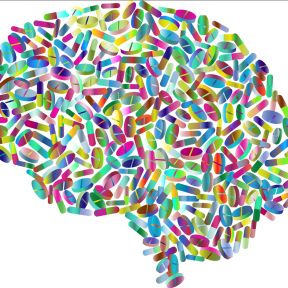
Comorbidity
When an individual has two or more distinct illnesses at the same time, this is called comorbidity. The ailments could be physical or mental. For example, a person might suffer from depression and multiple sclerosis, or anxiety and an eating disorder.
Disease overlap is common. Historically, 80 percent of Medicare spending covers patients with four or more concurrent conditions. Multiple disorders can exacerbate one another and make treatment a longer process or more difficult to achieve.

Many different mental health disorders can co-occur. One common example is depression and anxiety. However, some researchers argue that the two have similar roots and therefore do not constitute distinct disorders. Nonetheless, depression commonly overlaps with other disorders as well, such as bipolar disorder and ADHD.
There is debate over the definition of comorbidity, such as whether the term encompasses overlap between two conditions of any kind or between one medical and one psychiatric, as well as the relationship between the two, such as whether to distinguish between primary and secondary conditions.
Psychiatric comorbidity means that there is the coexistence of multiple psychiatric disorders. For example, a person with schizophrenia may also suffer from any of these disorders: panic, PTSD, OCD, generalized anxiety, social anxiety.
Illness can bring worry as well as racing thoughts, and this repetitive thinking can bring on sleep difficulties. In fact, insomnia and other conditions seem to go hand in hand for many people. One of the most common combinations is insomnia and depression. However, just a few sessions of talk therapy, such as cognitive-behavioral therapy for insomnia, can help on both fronts, addressing insomnia and depression. In fact, lifting insomnia will help lift depression.
• Eating disorders: anxiety disorders, mood disorders, self-harm, and substance use disorders.
• Attention deficit hyperactivity disorder: Social phobia, impulse control, borderline personality, alcoholism, eating disorders.
• Obsessive-compulsive disorder: Disorders including mood, anxiety, somatoform, hypochondriasis, body dysmorphia, impulse control, eating disorders.
• Insomnia: Disorders include substance use, anxiety, mood disorders.
• Borderline personality disorder: Mood disorders, anxiety disorder, substance use disorder, and other personality disorders.
• Narcissistic personality disorder: Disorders including antisocial, histrionic, borderline, schizotypal, and passive-aggressiveness.
• Obesity: Diabetes, stroke, cardiovascular disease, hypertension, sleep problems, mood disorders.
• Substance use disorders: Anxiety disorders, PTSD, mood disorders, ADHD, psychotic illness, borderline personality, antisocial personality.
• Migraine: Depression, anxiety, panic, bipolar, neurologic diseases, cardiovascular conditions, sleep conditions like insomnia, inflammatory conditions, chronic pain.
• Cancer: hypertension, hyperlipidemia, osteoarthritis, hypothyroidism, diabetes mellitus, coronary artery disease, mood disorders.
• Multiple sclerosis: Mood disorders, anxiety, hypertension, hyperlipidemia, and chronic lung disease.
• Arthritis: Diabetes, heart disease, obesity, mood disorders.
• Cardiovascular disease: Cancer, diabetes, back and neck problems, osteoarthritis, chronic obstructive pulmonary disease, vision problems.

The combination of substance use disorders and other mental illnesses is widespread. Half of the people who experience a mental illness will also be diagnosed with a substance use disorder at some point in their lives, according to the National Institute on Drug Abuse. The same goes for those first diagnosed with a substance use disorder and later a mental illness. In 2018, 9.2 million Americans had both a substance use disorder and a mental illness, according to the National Survey on Drug Use and Health.
A person can be first diagnosed with either a substance use disorder or a mental illness. Sometimes they occur concurrently, or they can occur one after the other.
Co-occurring disorders and dual diagnosis are two related terms. The term co-occurring disorders refers to when an individual has a substance abuse disorder and a mental illness at the same time, such as schizophrenia or depression. The term dual diagnosis describes the same condition.
Two categories can overlap for a few reasons. The same genetic or environmental factors could increase the risk of developing multiple disorders. There’s also evidence that the development of some mental disorders can render the individual more vulnerable to a substance use disorder and vice versa.

Treatment should center around all the presenting conditions, rather than treating one in isolation. Successful treatment may leverage medications, such as buprenorphine, and behavioral therapies, such as cognitive-behavioral therapy or dialectical behavior therapy.
Continuing research on the relationship between different diseases is critical to developing the most effective treatment approaches. On an individual level, disclosing multiple disorders to a physician is key to achieving successful care.














